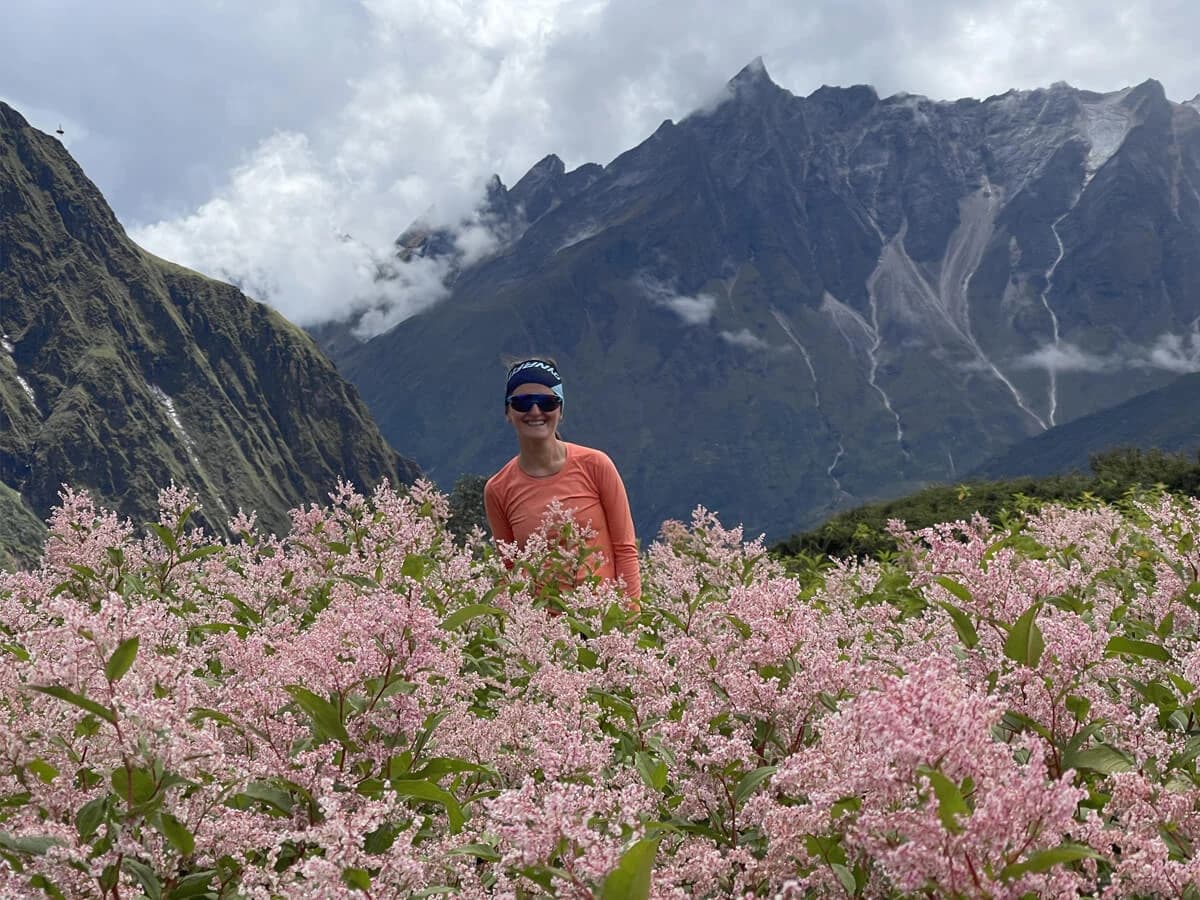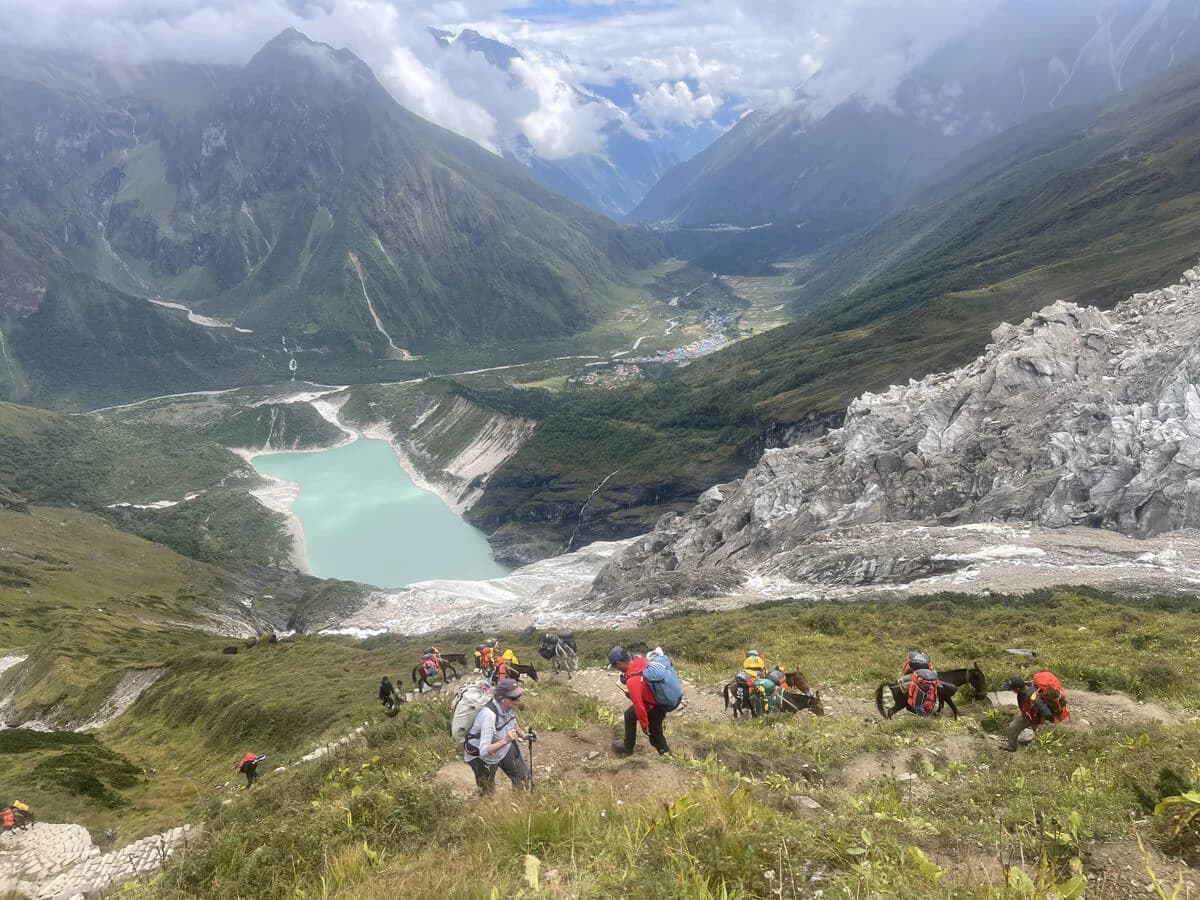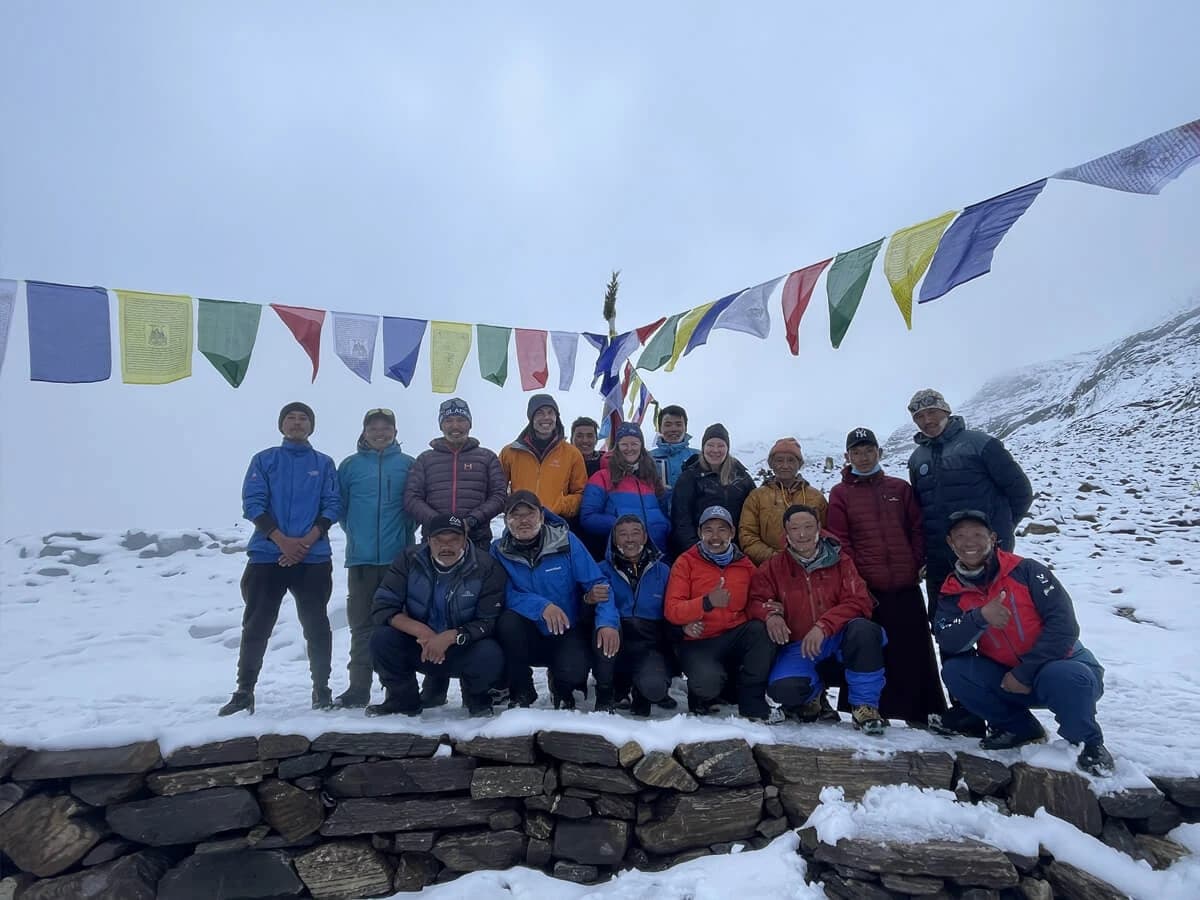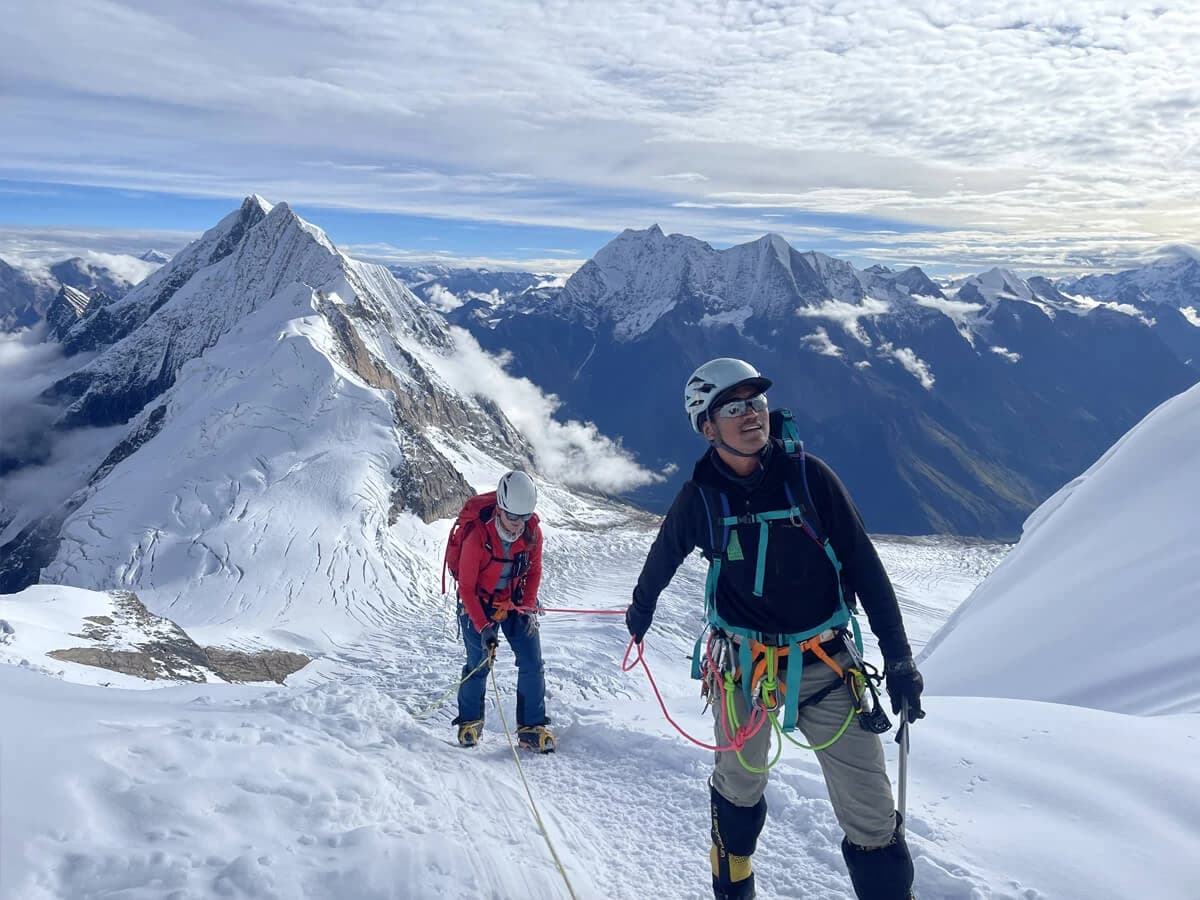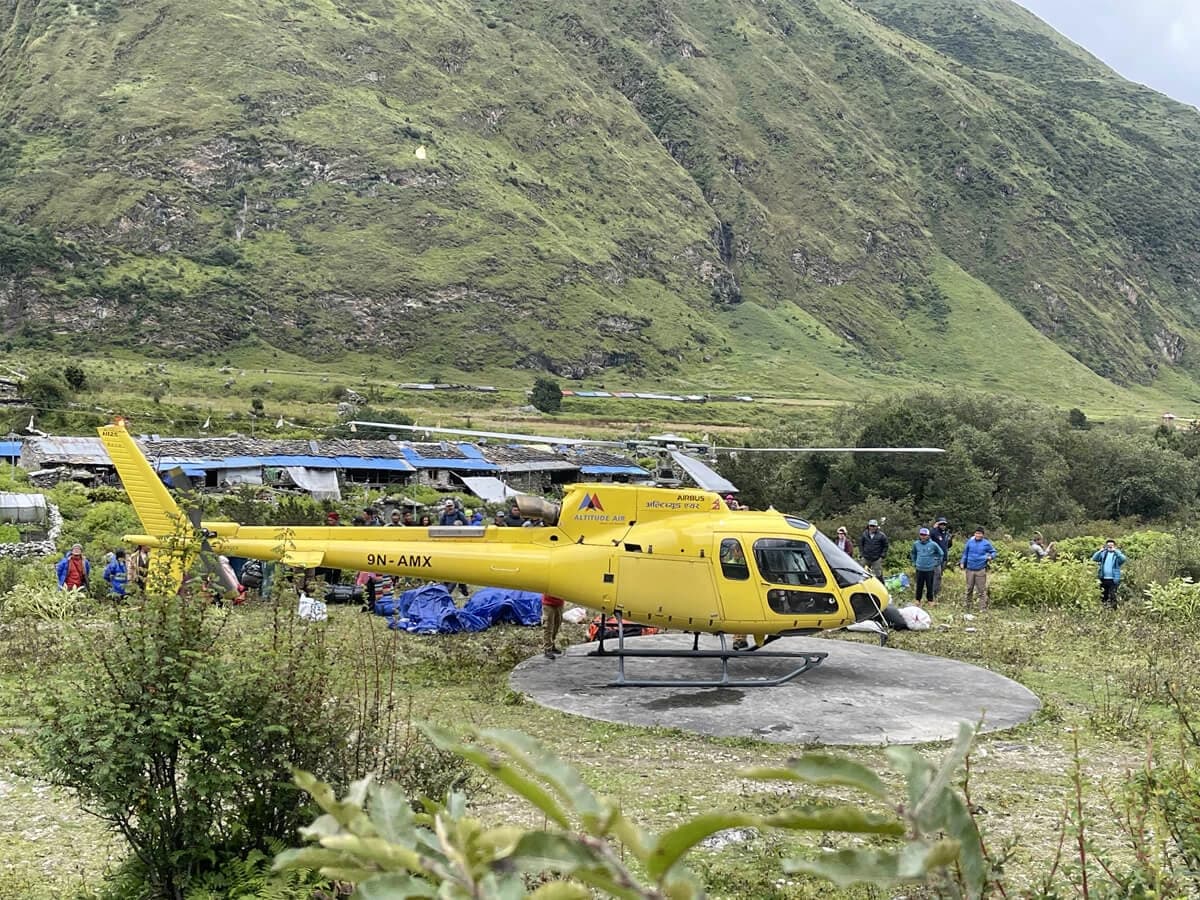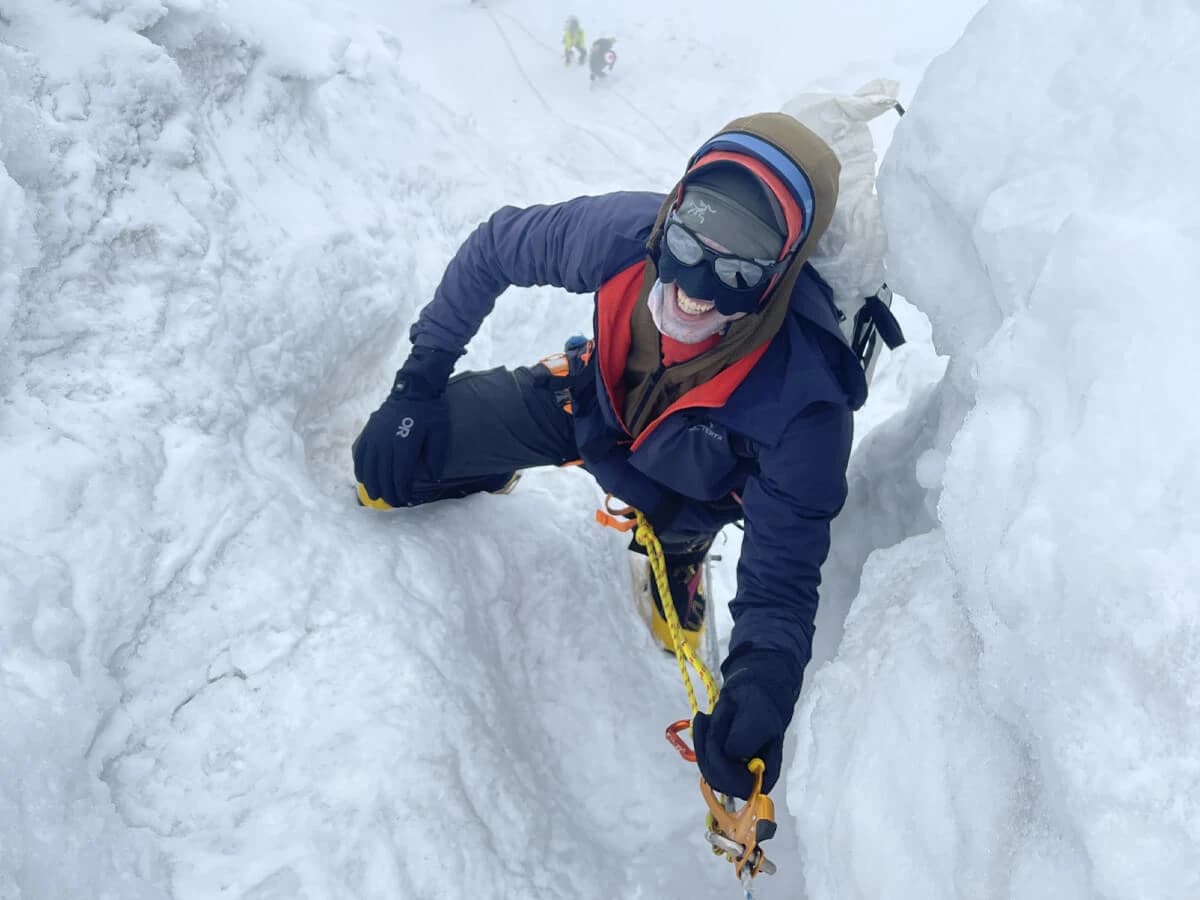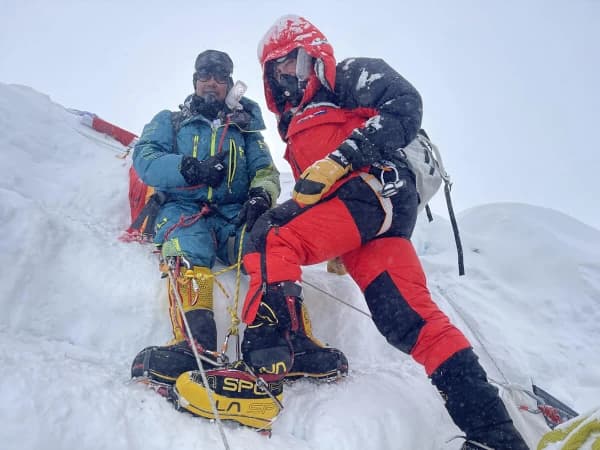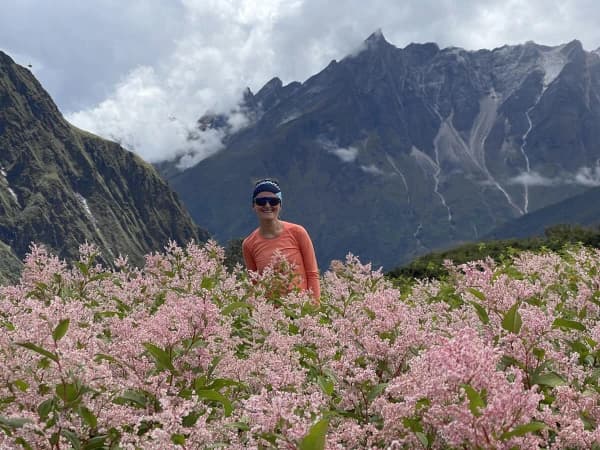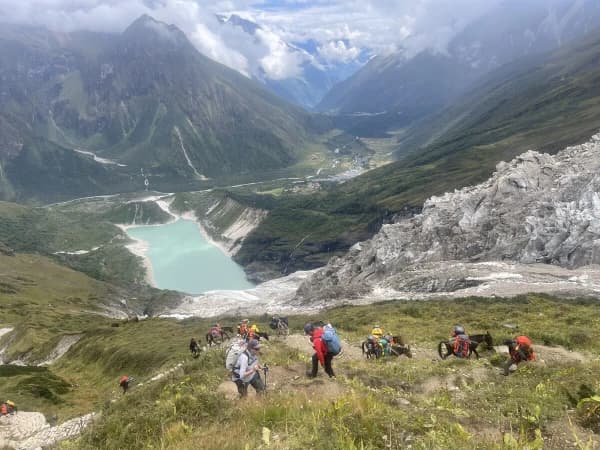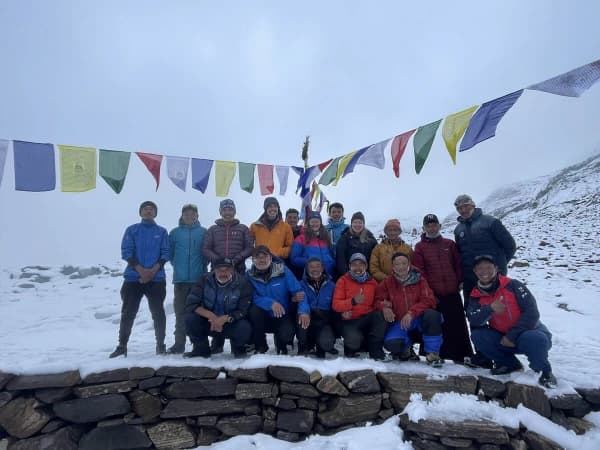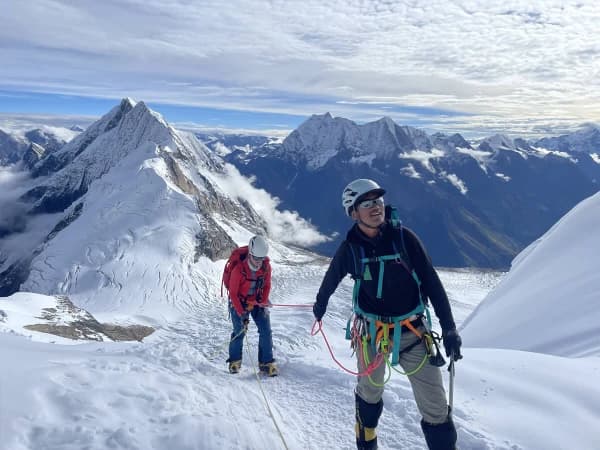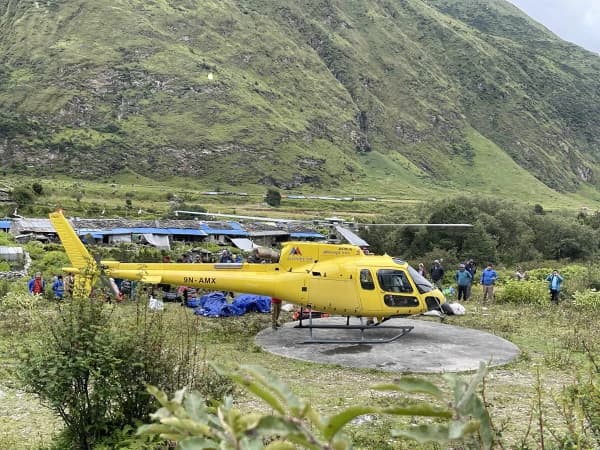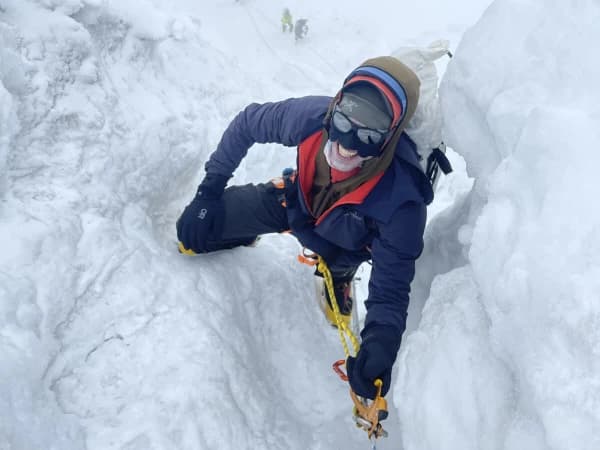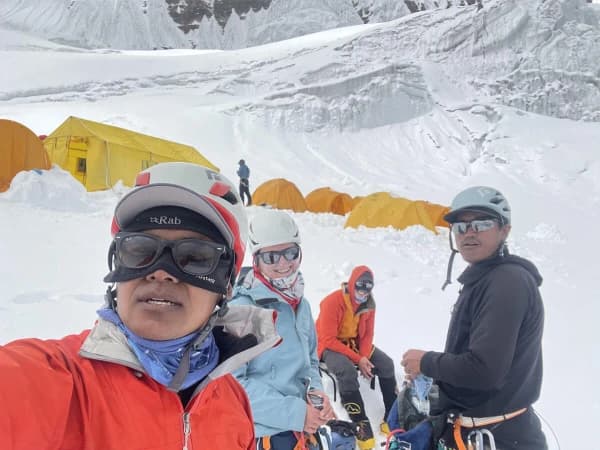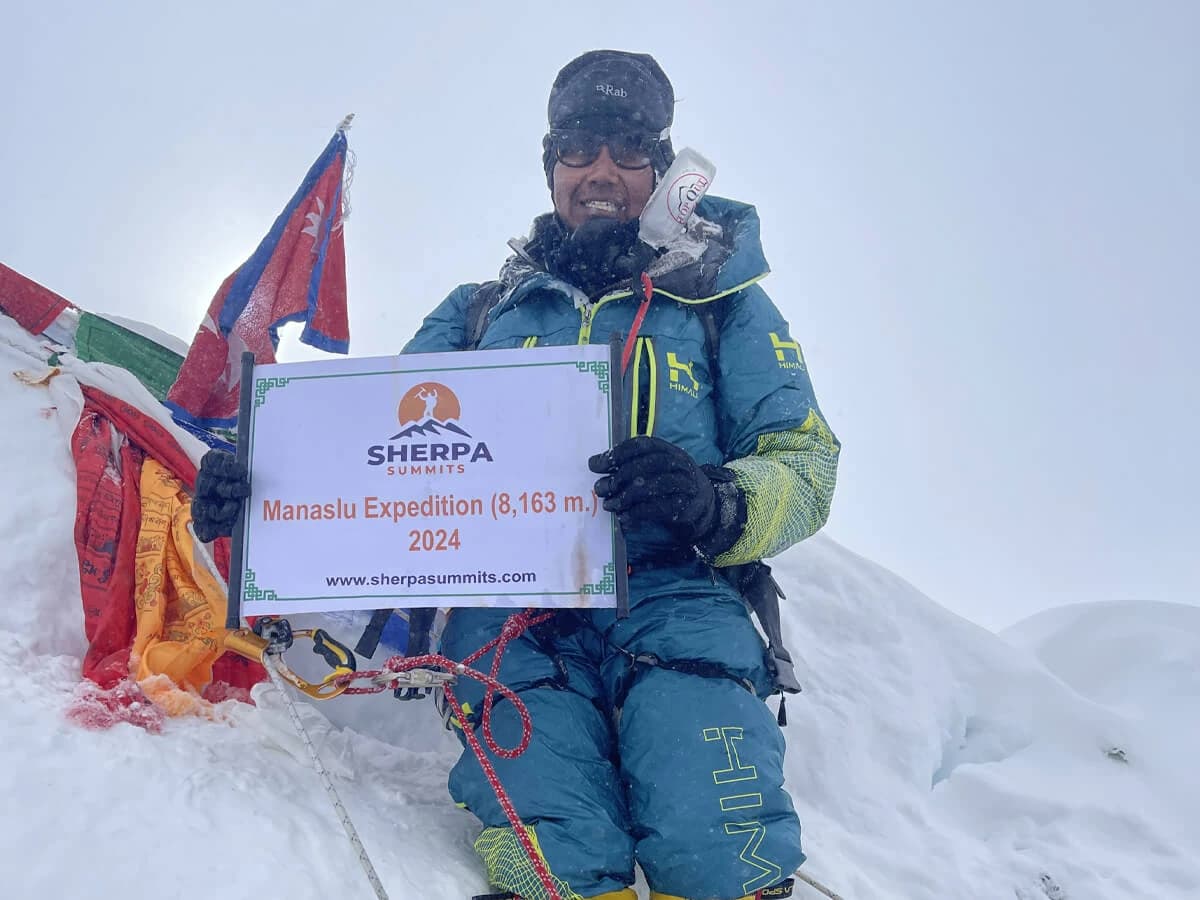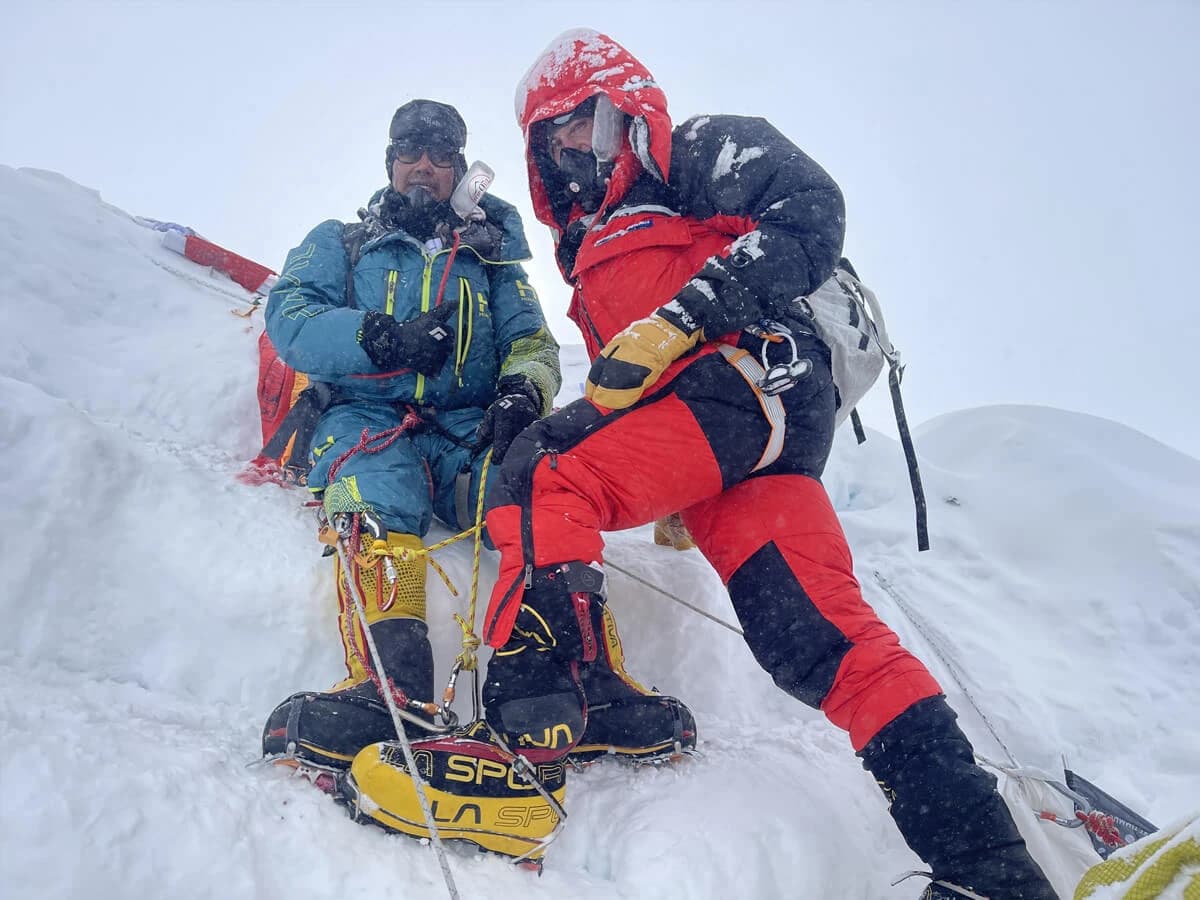Overview
Mount Manaslu, the world’s 8th highest peak, is elevated at an elevation of 8,163 meters above sea level. Mount Manaslu is also known as Kutang. Which is located in the ridges of Mansiri Himal in the Gorkha District of Nepal. Manaslu, meaning ‘The Mountain of Spirits,’ comes from the Sanskrit word Manasa, meaning ‘soul’ or ‘spirits,’ and offers an opportunity for aspiring mountaineers to tackle an 8,000-meter altitude climb for the first time. It is totally challenging and technical to climb as well. It’s known for its technical terrain, glacial landscapes, and unpredictable weather, making it a captivating adventure for experienced mountaineers ’worldwide.
Manaslu is the highest peak in the northern side of the Nepal Himalaya, Gorkha District, and is about 64 km east of Annapurna, the tenth-highest mountain in the world at 8,091 meters above sea level. It offers a variety of trekking and mountaineering options. There are at least six different routes to the summit of Manaslu, the south face being the most difficult. The Manaslu is considered one of the world’s best entry mountains into the world of high-altitude mountaineering. The summit success rate is among the highest for 8,000-meter peaks. But the way to the summit is far from easy. It requires advanced mountaineering skills, consistent training, excellent health, fitness, and determination, as well as a little luck when it comes to the weather.
The Manaslu Expedition Highlights
- Mt. Manaslu is one of the world’s 8th highest peaks, 8,163 meters above sea level.
- It is an immersion in the remote Himalayan wilderness and ancient culture.
- A great opportunity to explore the rich biodiversity of the Manaslu Conservation Area (MCA).
- It offers majestic panoramic views of the Himalayan massifs such as Manaslu, Shishapangma, Himalchuli, Ganesh Himal, Annapurna II, III, IV, Gangapurna, Tilicho Peak, Shringi, Ngadi Chuli, and several other peaks.
- It offers challenging but rewarding climbing experiences.
- The Mansalu Expedition offers a thrilling expedition journey to the summit of Mt. Manaslu (8,163 meters/26,781 feet), the eighth-highest mountain in the world.
- Exploring the beautiful villages of diverse ethnic groups such as Gurung, Magar, Newar, Chhetri Brahmin, Numbri, and Tsum throughout the trails.
- The Manaslu is a challenging and technical terrain to climb, but it provides breathtaking glaciers and unpredictable weather, making it one of the most captivating adventures in Nepal trekking and mountaineering.
Mt. Manaslu First Ascent History
Looking back, the history of Manaslu exploration began early in the 20th century, and on 9th May, 1956, Toshio Imanishi and Gyalzen Norbu made the first ascent of Manaslu Peak; they were members of a Japanese expedition. Before that, there were several other mountaineers who tried to conquer the top Manaslu summit, but unfortunately, it became unsuccessful.
Outline of the Itinerary
Mt. Manaslu is one of the most technical and challenging mountains among the 14 peaks over 8,000 meters. It takes 36 days to complete the whole expedition of Manaslu. The trek usually starts inKathmandu and ends in Kathmandu. The Manaslu Expedition trek route primarily follows the Manaslu Circuit, an ancient salt-trading route along the Burhi Gandaki River. The trek starts from Soti Khola or Arughat, passes through villages like Besi Sahar, Dharapani, Kharche, Bhimthang, Phedi, Dharamsala, Samdo, and Samagaon, and eventually leads to Manaslu Base Camp. The climbing period, including setting up camps and summit attempts, takes place above the base camp. The return journey retraces part of the route to Samagaon and then continues down to Soti Khola.
Manaslu Expedition Climbing Routes
Climbing Manaslu involves three rotations up and down in order to acclimatize and move equipment to the higher camps. The climbers start their summit journey from base camp towards camp 1, which stands at an elevation of 5,800 meters. It will be surprising to the climber who climbs Mount Manaslu for the first time. The Camp 1 journey involves a scramble towards Glacier or Crampon Point. Here climbers put crampons below their alpine boots to traverse the glacier safely. After the crampon point, the route follows some deep crevasses and involves climbing overhanging, short but steep ice walls, and the first rotations usually take the longest, perhaps several hours to do up and down in a day from base camp to camp 1 and retrace back to base camp for rest.
The second rotation from base camp to camp 1 crosses the vertical crevasses and glacier sections, and there is an overnight stay at camp 1 to acclimatize the clients bodies to the high-altitude environment.
The third rotation is from camp 1 to camp 2 and retracing back to base camp the same day, where climbers go a few hundred meters up to camp 2 to acclimatize before descending back to base camp for a few days’ rest. The camp 2, which lies at an altitude of 6,400 meters above sea level. As we already mentioned below, the route between camp and camp 2 is too dangerous due to unstable glacier movements day by day, and clients have to cross several crevasse areas while going up and down.
The fourth rotation is your final mission achievement gateway of the Manaslu Expedition, which is an excursion to both Camp 1 and Camp 2, which lie 6,400 meters away. The route between camp 1 and camp 2 is considered to be the most technical and dangerous of the entire route. After leaving camp 1, climbers have to pass under overhanging rocks, crevasses, and avalanche fields to get to camp 2. Camp 3 lies at an altitude of 6,600 meters, and it is the place where the final preparations are made. The route to Camp 4 is steep uphill; it is situated at an altitude of 7,400 meters above sea level. Likewise, paths towards the summit are wide and less steep, but movement at this altitude is difficult to push to the summit. In 2021, the true summit of Manaslu was discovered with a drone. Since then, reaching the actual summit has required a delicate traverse of an exposed slope. The summit of Manaslu is extremely narrow, where only two climbers can safely stand at the top of Manaslu peak (8,163 m).
The Climbing Gear and Equipment List of the Mount Manaslu Expedition
Climbing Mount Manaslu (8,163 m), the eighth-highest peak in the world, is a serious high-altitude expedition that demands meticulous preparation and specialized gear. Here’s a complete gear and equipment checklist to help you tackle this Himalayan giant safely and successfully:-
Technical Climbing Gear
Essential for glacier travel, fixed rope sections, and summit push:
- Double-layer mountaineering boots (8,000m-rated, for example, La Sportiva Olympus Mons)
- Crampons (steel, step-in compatible with boots)
- Ice axe (technical or classic, depending on route)
- Climbing harness (lightweight, alpine-style)
- Helmet (certified for mountaineering)
- Ascenders (jumar) and descenders (ATC or Figure-8)
- Carabiners (lock and unlock)
- Slings, prusik cords, and daisy chains
- Climbing rope (usually provided by expedition operator)
- Snow stakes or pickets (if self-supported)
Clothing Layers
Prepare for extreme cold, wind, and rapid weather changes:
- Base Layers: Merino wool or synthetic thermal tops and bottoms
- Mid-layers: Fleece jacket, softshell pants
- Insulation: Down jacket (expedition-grade), down pants
- Outer shell: Waterproof and windproof jacket and pants (Gore-Tex or similar)
- Summit suit: One-piece down suit (recommended above camp 3)
- Gloves: Liner gloves, insulated gloves, and expedition mittens
- Headwear: Balaclava, buff, sun hat, warm beanie
- Eyewear: Glacier sunglasses and snow goggles (anti-fog, UV-protected)
Camping and Trekking Gear
For the base camp and high camps:
- Expedition backpack (70-90 L) and summit pack (30-40 L)
- Sleeping bag (rated to -30 degrees Celsius or lower)
- Sleeping bag (insulated, inflatable, or foam)
- Tent (usually provided by expedition)
- Trekking poles (adjustable, with snow baskets)
- Headlamp (with extra batteries)
- Water bottles and insulated thermoses
- Hydration system (bladder or collapsible bottles)
Personal Essentials
- High-altitude medications (Diamox, antibiotics, etc.)
- First aid kit (customized for altitude and cold injuries)
- Sunscreen (SPF 50+) and lip balm
- Toiletries (biodegradable soap, wet wipes, toothbrush)
- Power bank and solar charger
- Camera or GoPro (optional but rewarding)
- Personal snacks (energy bars, gels, dried fruit, nuts)
Documents and Permits
- Passport and Nepal Visa
- Manaslu Expedition Permit
- Annapurna Conservation Area Permit (ACAP)
- TIMS card (Trekker’s Information Management System)
- Proof of travel insurance (must include helicopter evacuation)
Why Choose the Manaslu Expedition in Sherpa Summits?
Embarking on the Manaslu Expedition, a journey beyond the summit, opting for the Manaslu Expedition transcends a mere mountaineering objective; it is an immersion into a realm of stunning natural grandeur and unparalleled cultural authenticity. This extraordinary route threads its way through Nepal’s most remote valleys, leading you into the heart of traditional Tibetan communities. Here, ancient customs and a vibrant heritage are not relics of the past but living traditions, offering a profound cultural exchange rarely found on more frequented trails.
Beyond the rich human tapestry, the Manaslu region unfolds as a spectacular natural canvas. You will traverse lush subtropical forests teeming with life, ascend through challenging high mountain passes, and trek along the dramatic expanse of pristine glaciers. The expedition also presents an unparalleled opportunity for wildlife encounters, showcasing the unique biodiversity of the Manaslu Conservation Area, home to elusive and rare species such as the majestic snow leopard, the distinctive red panda, and the Himalayan tahr.
Crucially, the less commercialized nature of the Manaslu trek ensures a more intimate and serene experience. Far from the bustling crowds of other popular Himalayan routes, climbers can forge a deeper, more personal connection with nature and the formidable mountains that dominate personal fortitude—a chance to not only conquer a major Himalayan peak but to achieve a deeply transformative personal milestone.
